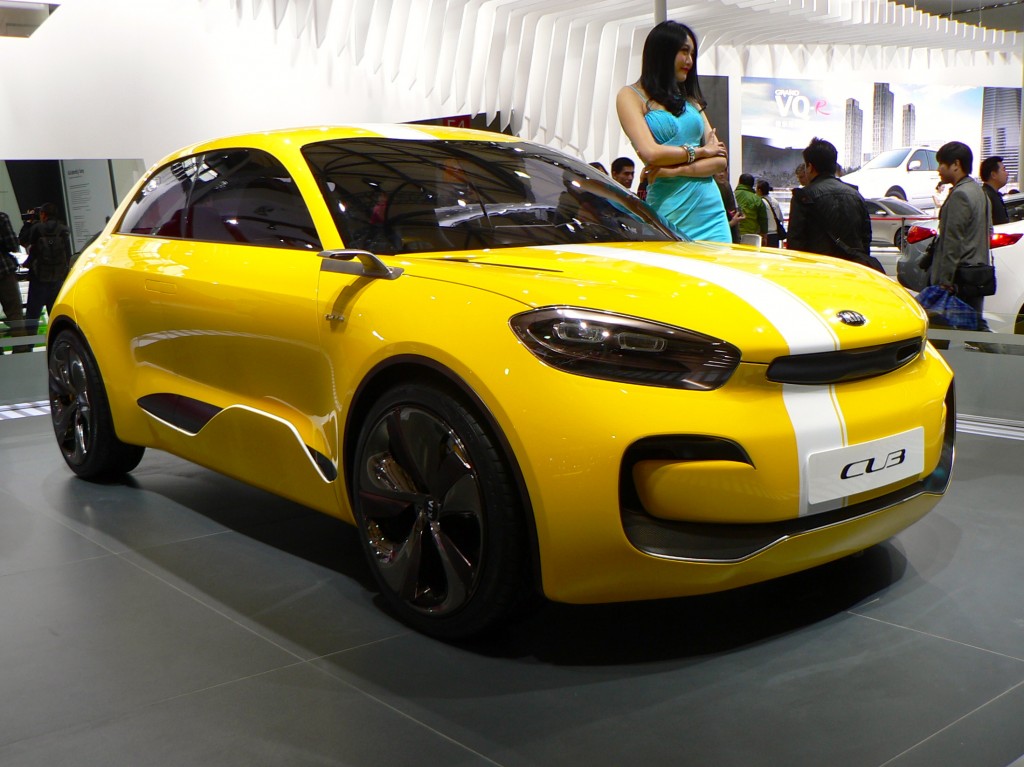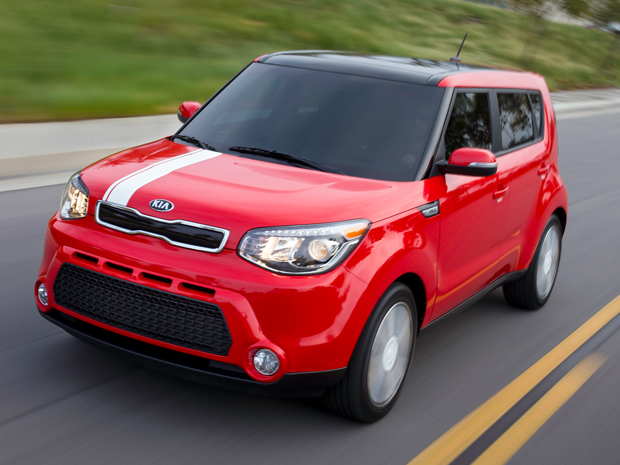Kia not abandoning its small car roots
Story by John LeBlanc
Human nature demands improvement. This is why when given the opportunity to move their products upmarket, the people who run car companies jump at the chance like kernels of corn in a hot-air popper. You only have to look at the likes of Germany’s Volkswagen or Japan’s Toyota to see companies that started out making bare bones transportation before graduating to selling $100,000-plus luxobarges. Today, we have Kia, whose vice-chairman, Hyoung-Keun Lee, recently announced that Kia would be a real competitor to the established luxury brands by 2017.
From a car company that a little more than a decade ago was on the brink of becoming a Korean Edsel, Kia has become a credible alternative to more established Japanese and American mainstream brands, mainly by offering outstanding value and leading design on small vehicles like the subcompact Rio and Soul and compact Forte and Rondo. The sales success (and subsequent profits) has given Kia the chutzpah and resources to take on the bigger fish in the larger ponds.
On top of the existing mid-sized Optima sedan (refreshed for 2014), Kia is introducing the one-size-up Cadenza luxury sedan this year (targeted at the likes of entry-level luxury sedans like the Lexus ES 350) and the an even larger, rear-wheel-drive Quoris four-door (planned for 2014). And Kia has also has hinted there may be more top-line, German-baiting luxury vehicles coming, as previewed by its Concept GT from the 2011 Frankfurt auto show and the Crossover GT Concept from this year’s Chicago event. With such upmarket aspirations, it would be easy for the Korean automaker to forget its small car roots. But the same luxury brands that Kia is chasing are moving downmarket at the same time.
At this Spring’s New York auto show, the 2015 Audi A3 compact sedan was unveiled to a private audience, while the BMW Concept Activity Vehicle (a preview of a future, front-wheel-drive 1 Series family of compacts) and the 2014 Mercedes-Benz CLA 45 AMG (the high-performance sedan that’s part of a slew of small Benz models coming) illustrated the luxury German brands’ downmarket intentions. To counter these new rivals, though, Kia is still focusing on its small cars, as evidenced by a slew of recent new subcompact and compact production vehicles and concepts.
Also at this year’s New York auto show, Kia unveiled second-generation, 2014 versions of its iconic Soul small crossover (seen above) and Forte Koup coupe. While both have only been on the market for a relatively short period of time (2009 and 2011, respectively), the Korean company is investing in these small cars with new powertrains, platforms, thoroughly modern interior accommodations and state-of-the-art infotainment features. Take for example the new 2014 Soul. While the exterior design of the iconic original is “evolutionary,” Tom Kearns, chief designer at Kia’s California studio that was responsible for the Soul, said his team felt they could take more chances with the car’s interior, be more “revolutionary.”
“We felt that from a perceived quality standpoint, we could really improve upon it,” Mr. Kearns says. His design team moved away from a lot of the hard plastic materials from the original Soul. Many of the interior areas of the 2014 version, like the door panels, use soft-touch materials.
“I personally really like how the door handle turned out. It feels nice, and looks more expensive than the older vehicle,” Mr. Kearns adds.

At this year’s Geneva Motor Show, we also saw the debut of the Kia Provo concept (seen above), a sportier two-door hatchback built on the same Rio platform as the Soul. Then, on the other side of the planet at the Seoul auto show, Kia unveiled its Cub concept, essentially a “four-door coupe” version of the Rio.
Like the luxury brands it’s chasing, Mr. Kearns says Kia is looking at many niches within the small car segment.
“We do these concepts because they are interesting for us to experiment with, show our management and get reactions from consumers on new types of vehicles,” he says. For instance, while there doesn’t appear to be much difference been the Provo and the Soul, the latter is seen as a larger vehicle offering bit more room.

Then there’s the Cub (seen at the top of this post), a further niche-within-a-niche concept. “While the Provo is more similar to the Soul than, say, the Optima or Forte, the Cub is even more of a niche vehicle.”
Caught between its upmarket aspirations, while upmarket brands are moving down, Kia seems to fighting rivals on two fronts as it takes on the likes of Honda, Toyota and Mazda at the low-end and Audi, BMW, Infiniti, Lexus and Mercedes at the high-end. And we while many of the smallest Kia concepts are just that, notions, we can probably expect to see even more variants and models in Kia’s future small car offerings.
“At last year’s Chicago show, we showed the Track’ster [a high performance Soul coupe],” Mr. Kearns says. “So we’re thinking about a car like that as well.”







![[del.icio.us]](https://www.straight-six.com/wp-content/plugins/bookmarkify/delicious.png)
![[Digg]](https://www.straight-six.com/wp-content/plugins/bookmarkify/digg.png)
![[Facebook]](https://www.straight-six.com/wp-content/plugins/bookmarkify/facebook.png)
![[Google]](https://www.straight-six.com/wp-content/plugins/bookmarkify/google.png)
![[Reddit]](https://www.straight-six.com/wp-content/plugins/bookmarkify/reddit.png)
![[StumbleUpon]](https://www.straight-six.com/wp-content/plugins/bookmarkify/stumbleupon.png)
![[Twitter]](https://www.straight-six.com/wp-content/plugins/bookmarkify/twitter.png)
![[Email]](https://www.straight-six.com/wp-content/plugins/bookmarkify/email.png)